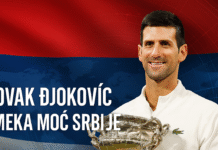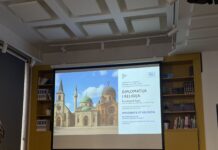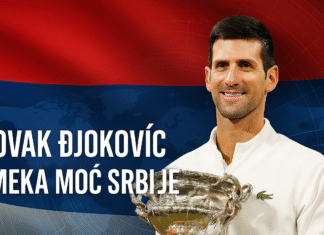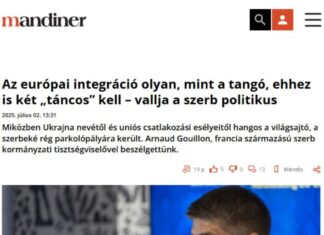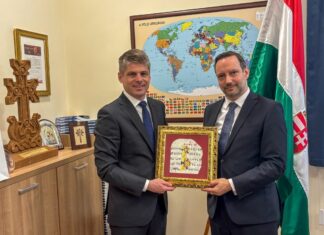 The majority of academic articles suggest that MFAs (ministries of foreign affairs) migrated to social media given a desire to converse and shape the opinions of online publics. However, recent studies also suggest that MFAs now use twitter to disseminate and gather information that may be of use to foreign policy makers and analysts. Indeed my own network analyses have shown that MFAs, embassies and diplomats routinely follow one another on social media. Thus, Twitter may now serve as a tool for diplomatic signaling.
The majority of academic articles suggest that MFAs (ministries of foreign affairs) migrated to social media given a desire to converse and shape the opinions of online publics. However, recent studies also suggest that MFAs now use twitter to disseminate and gather information that may be of use to foreign policy makers and analysts. Indeed my own network analyses have shown that MFAs, embassies and diplomats routinely follow one another on social media. Thus, Twitter may now serve as a tool for diplomatic signaling.
Since the Crimean crisis of 2014, the tensions between Russia and NATO have steadily mounted reaching fever pitch earlier this month when a Russian jet flew by a US Navy ship in the Black Sea. Analysts viewed this as another signal by Russia that it seeks to unravel the status quo along its borders in Eastern Europe.
Yet what about the signals sent by the other side? What is Brussels transmitting to Moscow? To answer this question, I decided to analyze all content published on the @Nato and @Natopress Twitter channels over the past month. The results were quite surprising in that NATO seems to be sending Russia mixed, if not contradictory, signlas.
Signal Number One: Towards De-Escalation
On the 20th of April the NATO-Russia council met in order to discuss tensions between both entities. In the days leading up, and following the meeting, NATO tweeted a series of comments meant to signal a desire to de-escalate tensions.
One such tweet, shown below, was published one day after a Russian fighter jet flew dangerously close to a US Navy ship. This tweet seems to signal a desire to move towards de-escalation with Russia.
Vision for 21st century is Europe whole, free at peace in which all sovereign nation incl #Ukraine #Russia cooperate for mutual benefit
— Alexander Vershbow (@NATOdsg) April 14, 2016
The following day, NATO’s Secretary General made clear his desire to avoid another Cold War. The tweet below, authored by Sky News, was Retweeted by NATO.
NATO Secretary Genreral Jens Stoltenberg tells @AliBunkallSKY that he doesn’t want a new Cold War with Russia https://t.co/mvmj5ta6pY
— Sky News Tonight (@SkyNewsTonight) April 14, 2016
On the day of the Russia-NATO council meeting, NATO Secretary General was also quoted in a Tweet as saying that NATO’s goal is to prevent conflict, avoid provocations and foster dialogue.
Similarly, on the 5th of May, NATO published a tweet describing its main goal as preserving peace in an era of instability again.
One particularly interesting Tweet, seen below, was published by the US mission to NATO and stated that political dialogue was necessary in order to reduce risks of direct confrontation adding “in light of recent events”. This Tweet was also re-tweeted by NATO and again illustrates a desire to avoid friction.
On the agenda for tomorrow’s #NATO-Russia Council: discussing risk reduction especially in light of recent incidents pic.twitter.com/Ad8gOMDyIY
— US Mission to NATO (@USNATO) April 19, 2016
Signal Number Two: Towards Escalation
The second signal emanating from NATO Tweets is one of escalation. For instance, on the very day of the Russia-NATO council meeting, NATO’s press secretary Tweeted the comment below detailing Russian lies speared against NATO, a tweet that hardly seems conducive for dialogue and tension reduction
Less than a week later, NATO Tweeted a report on Russian dis-information during the Chernobyl disaster. This was followed by another tweet detailing Russian propaganda about NATO’s capabilities.
It therefore seems that while signaling a desire to reduce tensions, NATO also went out of its way to negatively portray Russia as a consistent liar.
NATO also accused Russia of rising military tensions in the Baltic States. In the Tweet below, published on the 4th of May, NATO attacks Russia’s decision to create three new army divisions in response to NATO’s deployment of troops in Poland and the Baltic States saying “Let’s remember what came first”. This statement was meant to portray Russia as the instigator of military buildup along its borders.
Yet remarkably, it was NATO who went out if its way to emphasize its own military buildup along Russia’s borders. Numerous Tweets published (or re-Tweeted) by NATO over the past month dealt with its troop deployment in the Baltic States and Poland, as shown below.
In addition to the Baltic States, NATO highlighted its range of activities in other nations bordering Russia including Ukraine, Georgia and Finland as can be seen below.
Indeed NATO’s well photographed military build-up along Russia’s borders seems a much stronger signal that the reconciliatory Tweets listed above.
The signal of escalation may have been further amplified in Tweets dealing with NATO’s attempt to increase its sphere of influence both in Eastern Europe and in other parts of the world. These included the Tweets below dealing with Montenegro’s joining the alliance alongside images from official visits to Albania, Croatia, Israel, Jordan and Kuwait.
Which Signal Is Louder?
It seems that during April and May, NATO sent Russia mixed, if not contradictory, signals on social media. The question is- which signal was louder? To answer this question, I evaluated the topics addressed in all NATO tweets over the last month. This analysis is shown in the image below.
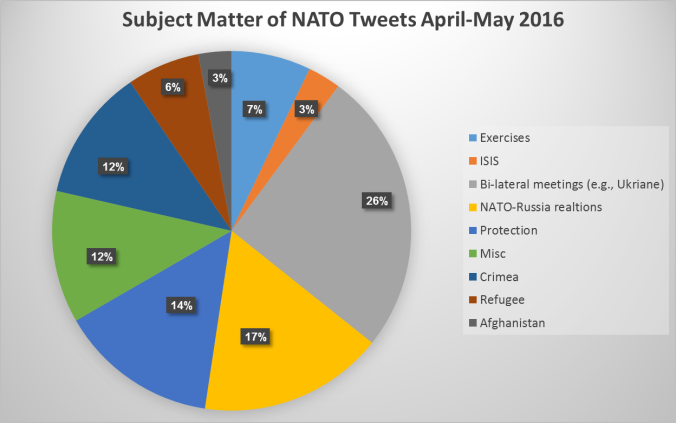
As can be seen, the majority of Tweets (26%) dealt with bi-lateral meetings between NATO officials and heads of state, mostly the heads of Baltic States or states located along Russia’s borders. 17% of Tweets dealt with US-Russian relations, the majority of which had a negative tone accusing Russia of dis-information, aggression and risk tacking. Finally, 14% of NATO tweets dealt with the protection, and deployment of troops, in Baltic states or nations bordering Russia. In total, 57% of NATO tweets dealt with Russian aggression or NATO activities along Russia’s borders. To this one may add another 7% of Tweets that featured images from NATO’s vast military exercises.
The dominance of the Baltic States, and nations neighboring Russia, in NATO Tweets is also made evident in the image below which details the prevalence of world regions. As can be seen, 55% of all NATO Tweets dealt with Eastern Europe while another 11% dealt with the Baltic States.

Finally, the image below includes the prevelenace of specfic contries in NATO tweets. As can be seen yet again, most countries mentioned during April-May were from Russia’s former speher of influence.

Summary
Diplomats often say that words matter. One might argue that in the age of digital diplomacy, Tweets matter as well. This post attempted to analyse the signals NATO is sending Russia via Twitter. Its results suggest that NATO is sending mixed signals, one emphasising de-escalation and the other emphasizing military build-up in Russia’s back yard. One has to wonder how such signals are heard, and interpreted, in Moscow.




